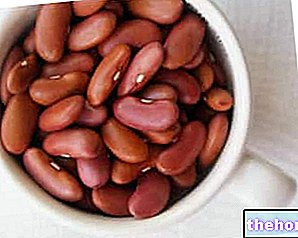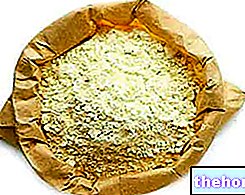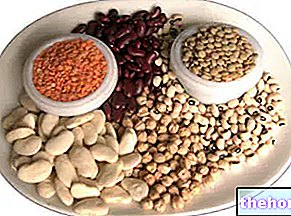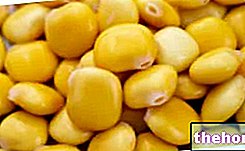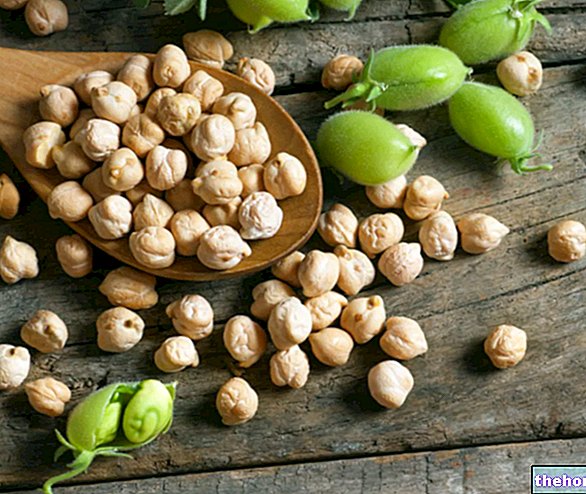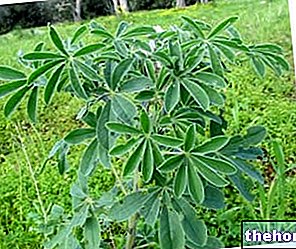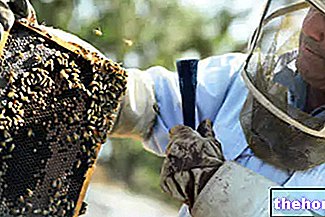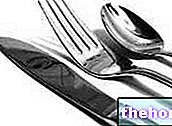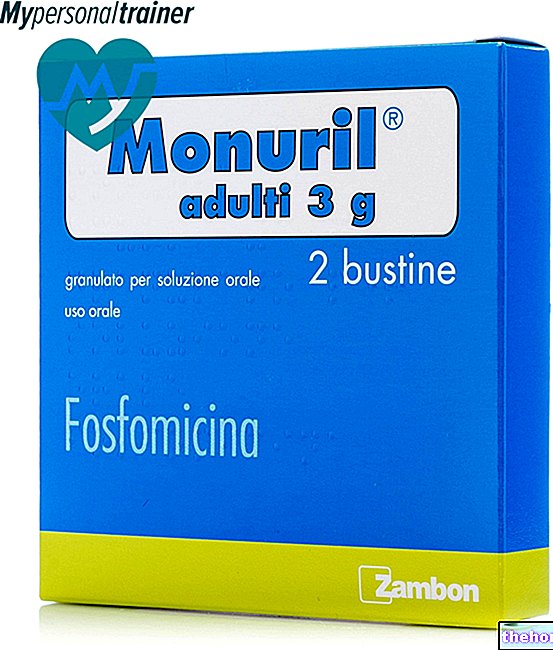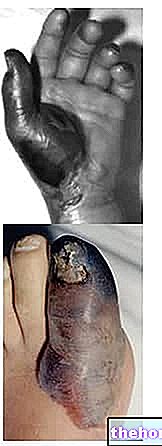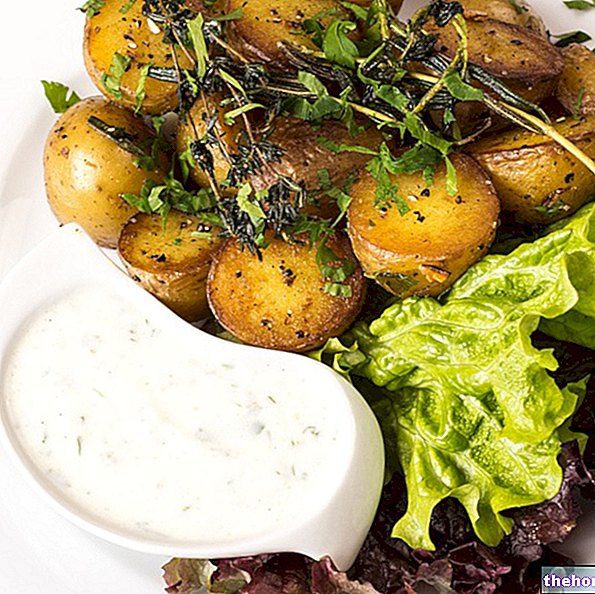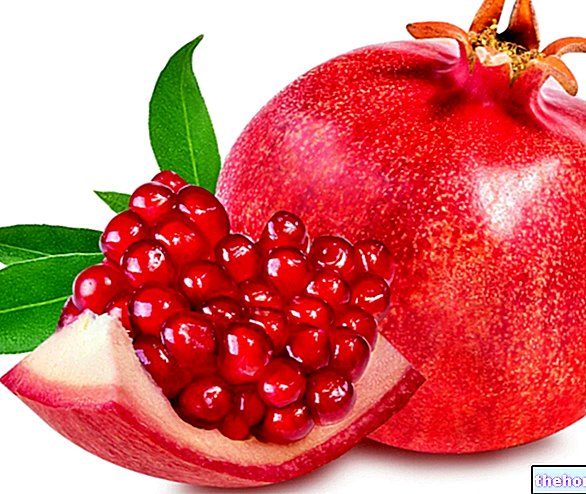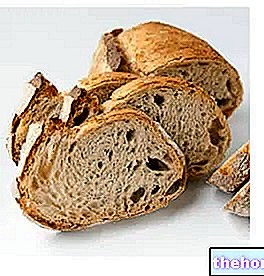Lentils in history
As evidenced by the archaeological finds, lentils have been consumed since the prehistoric age, and have always been considered the meat of the poor, just like beans and legumes in general. The fossil records show that lentils have the distinction of being the first - therefore the oldest - legumes exploited in the food sector,

Globally, it is estimated that 3.2 million hectares of land are planted with lentils, for a total yield of 900 kg / ha, equivalent to over 3.5 million tons [taken from www.agraria.org/]
Botanical description
In botany, the lentil plant is Ervum lens, a dicotyledon belonging to the family of Leguminous plants or Papilionate: it is a plant species currently cultivated in all areas with a warm temperate climate. The annual plant reaches not very high heights, of just 30 or 40 centimeters; it has an erect, slender, branched and angular stem, and small blue or whitish corolla flowers, grouped in two or three, along peduncles of variable length. The leaves, composed of one to eight leaflets, are pinnate and alternate, and have a simple cirrus. Although the root of the lentil plant is taproot, the taproot does not penetrate very deep (it goes up to 35-40 cm).
The fruits of Ervum lens they are pods, rhombic legumes, containing few round, crushed seeds (lenticular, to be precise) and extremely energetic. The diameter of the lentils varies according to the species: some are very small (2mm), others larger (9mm). seeds have a variable color from dark yellow to orange; some species of lentils have a greenish tint, others are even almost black to the eye.
Varieties and main characters
There are many varieties of lentils, mainly differentiated according to color. In addition, we remember the lentils of Onano (Viterbo) and the lentils of Villalba (Caltanissetta): the former are known for their particularly delicate flavor and gray-blackish color. Those of Villalba, on the other hand, are remembered not only for their extraordinary organoleptic properties and very high protein content, but also for their ability to improve the fertility of the soil in which they are grown, thanks to the nitrogen-fixing properties of the plant itself.
Although easily grown in warm temperate places, there is a need to perfect cultivation techniques, to achieve some objectives:
- Increase the plant's resistance to colder climates;
- Give the plant an erect posture;
- Mechanical harvesting of fruits;
- Elimination of the morphological defects of the plant;
- Increased resistance to parasites and adversity.
Cultivation and environment
We have seen that the development of lentils is facilitated by the warm temperate climate: it is a "strong" legume because it resists even in arid and not very advantageous soils. Not surprisingly, lentils resist even in drought climates and survive even with very little water, ensuring a rather satisfactory yield. The cultivation of lentils in calcareous soils is not recommended, because the yield is of little value, both commercial and nutritional; moreover, lentils do not like overly fertile soils with high levels of salinity. Sandy and clayey soils are particularly suitable. In low altitude areas, sowing is recommended in November, while in high altitude areas it is preferable in early spring (March and April).
In our country, about 1,000 hectares of land are destined for the cultivation of lentils: in this regard, Italy is a modest producer of these legumes.
Nutritional properties
Being legumes, lentils represent a mine in terms of proteins, fibers, iron, magnesium and potassium: it is estimated that their iron content is far higher than meat, despite the fact that iron absorption is almost reduced and proteins of little biological value. In fact, the proteins contained in lentils (and in legumes in general) are deficient in some essential amino acids (cysteine and methionine): the result is an "inevitable lower assimilation of all amino acids. To overcome this drawback, it is advisable to associate lentils with pasta or cereals.
Lentils are very nutritious and energetic: 100 grams of product provide 291 kcal. They consist of approximately 51% carbohydrates, 23% protein, 14% fiber, 1% fat and the remaining 11% water.
Among the most important chemical components, we find:
- Isoflavones, powerful antioxidants;
- Thiamine, useful for promoting memory and concentration;
- Vitamin PP (vitamin B3), important for balancing energy metabolism and reducing triglycerides in the blood; niacin is also a potential antioxidant
For all these reasons, the consumption of lentils should not be limited only to the holidays at the end and beginning of the year, as tradition teaches, but should extend to become a healthy habit, if not daily at least weekly.
However, lentils are not recommended for gout and uremia sufferers, because they are a source of purines.
Finally, do not forget that lentils should never be eaten raw due to the presence of antidigestive substances, which are destroyed during cooking.
For further information: lentils, calories and nutritional values
Vegan Lentil Meatloaf
Problems with playing the video? Reload the video from youtube.
- Go to the Video Page
- Go to the Video Recipes Section
- Watch the video on youtube
Watch also the Video "Nutritional properties of lentils"
Therapeutic activities
Lentils are particularly suitable for those suffering from anemia, physical and mental fatigue and malnutrition. Furthermore, they are rich in fiber - therefore they facilitate intestinal transit - and in antioxidants, useful for counteracting the activity of free radicals. It seems that lentils are also suitable for diabetics because they slow down the absorption of carbohydrates, avoiding glycemic peaks.
Last but not least, lentils are attributed galactofore properties: in this regard, they are particularly suitable for mothers who breastfeed their babies because they seem to stimulate milk production and keep it constant over time.
Preservation and cooking
As with beans, canned lentils - certainly more practical and ready to use - and dry lentils, requiring a certain time of soaking followed by boiling, exist on the market. In order to preserve all the vitamins and minerals present, it is necessary to advises not to dip the lentils in abundant water: the legumes should be barely covered by the water.
Lentils in brief, summary on lentils "
Other Foods - Legumes Peanuts Chickpeas and Chickpea Flour Cicerchie Beans Azuki Beans Green Beans Broad Beans Falafel Chickpea Flour Bean Flour Bean Flour Lentil Flour Pea Flour Soy Flour Legumes Lentils Lupins Peas Soy Jackdaws Tempeh Tofu Yogurt ARTICLES Soy OTHER Categories Alcoholics Meat Cereals and derivatives Sweeteners Sweets Offal Fruit Dried fruit Milk and derivatives Legumes Oils and fats Fish and fishery products Salami Spices Vegetables Health recipes Appetizers Bread, Pizza and Brioche First courses Second courses Vegetables and Salads Sweets and Desserts Ice creams and sorbets Syrups, Liqueurs and grappas Basic Preparations ---- In the Kitchen with Leftovers Carnival Recipes Christmas Recipes Diet Recipes Light Recipes Women's Day, Mum, Dad Functional Recipes International Recipes Easter Recipes Recipes for Celiacs Recipes for Diabetics Recipes for Holidays Recipes for San Valentino Recipes for Vegetarians Recipes p roteiche Regional Recipes Vegan Recipes

